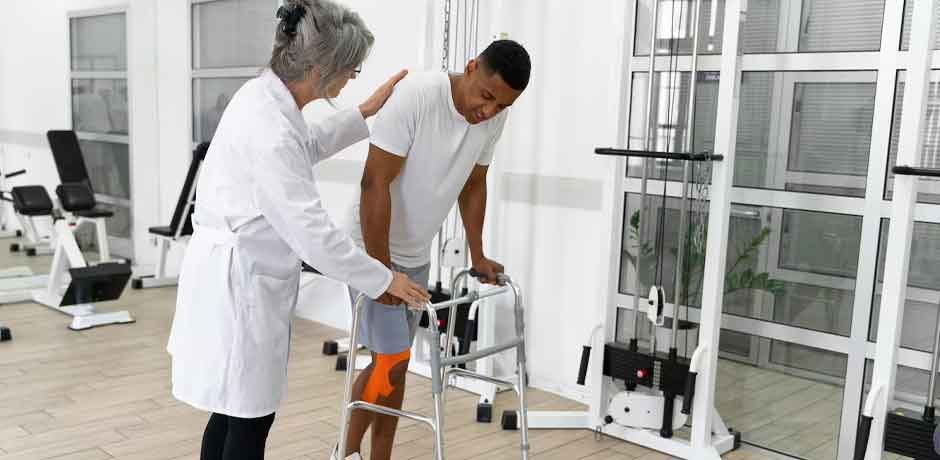An injury or sickness can significantly impair our ability to move freely and navigate life’s physical challenges. Whether you’re grappling with a sports injury or a chronic disease such as arthritis or the aftermath of an accident, the right physical therapist can help you recover your mobility.
Without question, physical therapy is an effective form of treatment that can assuage pain and improve your overall health and function, allowing for greater mobility. For instance, the skillful team at the Movement 101 Chatswood clinic designs customized treatment plans to help patients recover from various injuries. They also walk with you throughout recovery, implying you won’t have to go through it alone.
That said, how do such professionals help give patients a new lease on life? Here’s a rundown of what their treatment process typically involves:
1. Assessment
A critical component of the physical therapy process involves the evaluation of a patient’s condition. During this phase, therapists examine various factors to ascertain how best to proceed with treatment.
For instance, the therapist assesses your current mobility and pain level. Generally, this entails examining the surrounding muscles, bone structure and joint placement to identify and deal with underlying issues that could limit mobility.
2. Treatment Plan
Following the initial assessment, your therapist designs or maps out a treatment plan with your goals and needs in mind. They also account for your lifestyle and level of physical activity to ensure the plan is sustainable and safe.
Depending on your injury, the treatment team may incorporate various techniques to help you recover. Let’s break down some of the core approaches:
- Manual Therapy
This involves manipulating the body’s soft tissues and joints to reduce pain and inflammation. Examples include massage therapy and joint mobilization. You can gain significant relief from chronic pain through this type of therapy. And as the pain subsides, your range of motion increases, and so does your ability to move freely.
- Exercise
We’re aware of the value of exercise in the general context. But in regards to pain management and mobility, exercise serves a more specific purpose. For a start, it focuses on strengthening muscles and improving flexibility, balance, and coordination – core elements essential for pain-free movement.
By engaging in regular, targeted exercises, you can improve your body’s efficiency and help it heal faster. Case in point, core exercises such as leg lifts and planks can help stabilize your spine, making it easier to move without fear of injury. Also, isotonic exercises such as squats and push-ups help strengthen weakened muscles and improve mobility. Basically, by incorporating a range of exercises into your treatment regimen, a therapist helps improve your odds of regaining full mobility. That said, they generally recommend exercises based on your condition, ability level, and other factors to ensure you don’t exert yourself or cause further damage.
3. Patient Education
Knowledge, as they say, is power. It also pays to know the particularities of a therapeutic program and how it can help you recover. With that in mind, a physical therapist educates you on your condition and the importance of completing a treatment regimen to fully recover. Armed with such insight, you are more likely to adhere to the prescribed exercises, treatments, and at-home care instructions.
Likewise, they outline the potential benefits of treatment and outline that it doesn’t guarantee recovery. Thus, it allows you to have realistic expectations. Plus, you can be more mindful of factors that could affect your recovery and take better care of yourself over the long term. For instance, you could make lifestyle changes such as improving your diet and getting enough rest to support your recovery.
4. Follow-up Care
Throughout the process, your therapist offers guidance and support. They also frequently monitor your progress to ensure you’re on track to reach your goals. Likewise, they may modify your treatment plan if needed. For instance, if the current regimen isn’t producing the desired results, they may introduce alternative approaches to reduce your pain and improve mobility.
Moreover, they let you know about signs of relapse or possible complications; this helps you adjust your lifestyle to accommodate them and ensure the injury doesn’t recur. They may also help you explore ways to manage or avoid future injuries by offering tips such as stretching before exercising or using proper ergonomics.
Think of a physical therapist as a partner in your recovery journey. They help you regain mobility and reduce pain – two core goals of physical therapy. And while they may deploy other techniques, the idea is to use individualized treatment plans to promote recovery.



